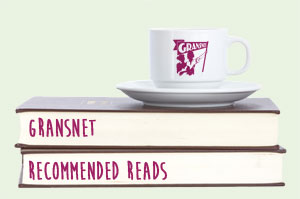We hear from author Sophia Tobin on the ideals of female beauty personified in the figure of a Victorian Angel in the House, and the erasure of strong female personality as a desirable quality. Are those docile, pretty, sweet, 'perfect' women much different from what young girls are being asked to become today?
Elizabeth Siddal modelled for Sir John Everett Millais's Ophelia in 1851.
Last year, in the course of my research for a book, I came face-to-face with the Victorian Angel in the House. I had always known she was there, of course: her hair in ringlets, corseted to within an inch of her life, smiling sweetly, a figure both distant and familiar.
The term 'The Angel in the House' was coined by Coventry Patmore in the poem of the same name, first published in 1854. The Angel was the ideal Victorian woman: docile, decorative, submissive, a virginal figure who had somehow managed to produce children. Unlike her eighteenth-century predecessors - who despite their lack of legal rights, could be powerful chatelaines and businesswomen as well as wives - this Victorian ideal was born out of fear.
In the insecurity of a newly-industrialised society, the spheres of work and home became more sharply divided, and so did the ideas of respectability and ruin. The Angel in the House was a symbol of safety and comfort in a changing world.
For every angel, of course, there is a demon, in this case the Fallen Woman. The art and literature of the period reflects an obsession with prostitutes and mistresses. In the shadows, these relationships were rife, but tolerated as long as appearances were maintained.
The Angel and her attendants may seem a long way from us; figures to be pitied in an age when women are immeasurably stronger legally, politically and financially. But as I look at those passive faces in Victorian paintings I cannot help but consider what is being asked of young women today.
The double standard was played out in the marriage of Charles Dickens. Dickens was fond of the fictional Angel in the House but found reality harder to contend with. His wife Catherine was docile, loyal and the bearer of many children. But in middle age Dickens bemoaned her silliness and her thickening figure, the by-products of the angelic burden. There was no recourse for her when he engineered a humiliating public separation in order to pursue his secret relationship with the actress Ellen Ternan.
The art of the period tells its own tale of an erasing of female personality, hidden beneath the carapace of loving submissiveness or idealised beauty. Coming face-to-face with a portrait of a Pre-Raphaelite 'stunner', it is hard not to be chilled by the empty eyes of a woman painted as a decorative object. Like a Victorian page three girl she looks out at you, undeniably beautiful, her complexities erased. The most famous of the Pre-Raphaelite models, Elizabeth Siddal, was feted for her red-gold hair and delicate features, but her beauty carried with it an air of tragedy. As Rossetti's lover, Elizabeth was one of society's lost women; and she spent years begging him to marry her. When marriage came, she lost two babies, and ended her life with laudanum.
The Angel and her attendants may seem a long way from us; figures to be pitied in an age when women are immeasurably stronger legally, politically and financially. But as I look at those passive faces in Victorian paintings I cannot help but consider what is being asked of young women today. They too are subject to a rampant perfectionism which dictates their weight and appearance.
Like the Angel, they are taught that they have to be perfect (as mothers, partners and career women) - and if they don't have it all, it's their fault. But if the Angel in the House teaches us anything it's that the idea of perfection is the most dangerous thing of all; because it is nothing to do with being human, or being happy.
Sophia's new book The Widow's Confession, an intricate historical thriller, is published by Simon & Schuster and is available from Amazon.



